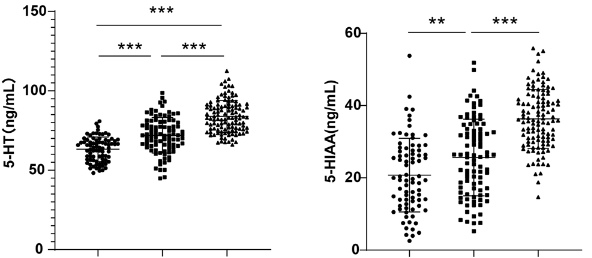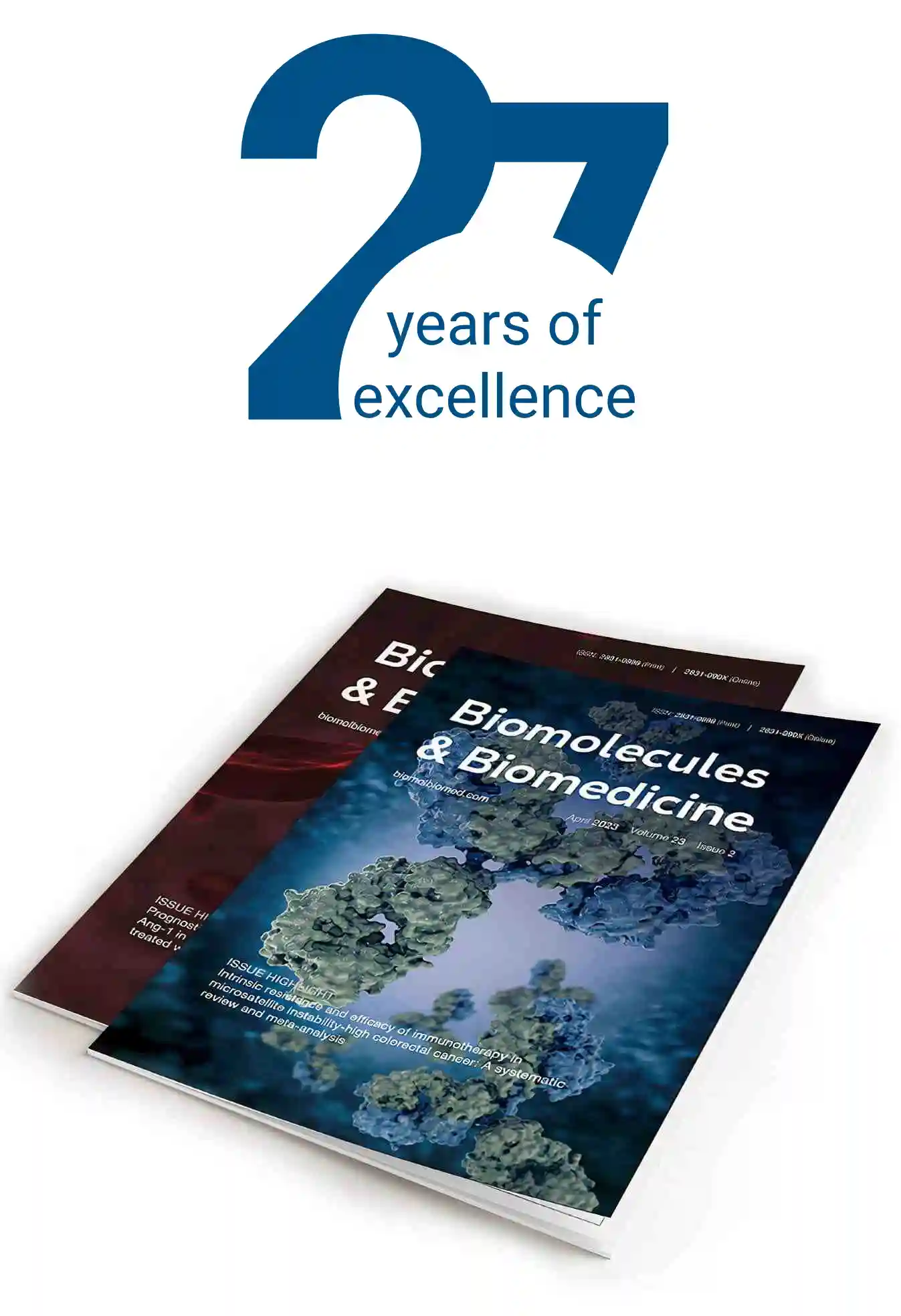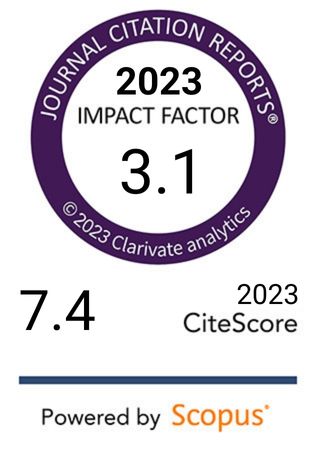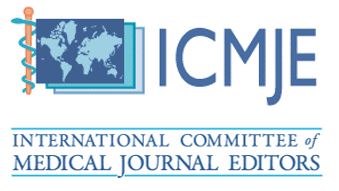Plasma serotonin precursors and metabolites as diagnostic and therapeutic biomarkers for osteoporosis in postmenopausal women
DOI:
https://doi.org/10.17305/bb.2025.11513Keywords:
Postmenopausal women, plasma, 5-hydroxytryptophan, 5-HTP, 5-hydroxytryptamine, 5-HT, 5-hydroxyindoleacetic acid, 5-HIAA, osteoporosis, diagnosis, targetAbstract
This study aims to evaluate the diagnostic and therapeutic potential of plasma 5-hydroxytryptamine (5-HT) precursors and metabolites in postmenopausal osteoporosis (PMOP). A total of 287 consecutive postmenopausal women were retrospectively enrolled. Data including age, body mass index (BMI), serum calcium, serum phosphorus, menopausal duration, and bone mineral density (BMD) of the lumbar spine and femoral neck, as well as serum and plasma samples were collected. Based on BMD measurements, participants were categorized into normal, osteopenia, and osteoporosis (OP) groups. Serum β-CTX and PINP, along with plasma levels of 5-HT precursors and metabolites, were measured using ELISA. Receiver operating characteristic (ROC) curve analysis, multivariate analysis, and Kaplan-Meier curves were employed to assess the predictive value of 5-HT precursors and metabolites in PMOP and to evaluate the association between their expression levels and PMOP risk. Plasma levels of 5-hydroxytryptophan (5-HTP), 5-HT, and 5-hydroxyindoleacetic acid (5-HIAA) were elevated in PMOP patients and showed correlations with bone turnover markers and BMD. These biomarkers were identified as independent risk factors for PMOP. Combined analysis of the three biomarkers demonstrated greater predictive value than individual markers. Elevated levels were particularly pronounced in women with ≥ 12 years since menopause (YSM), and were associated with a higher risk of developing PMOP. In summary, 5-HT precursors and metabolites are significantly associated with bone turnover and BMD in postmenopausal women. They serve as independent risk factors and show strong predictive value for PMOP, suggesting their potential as plasma biomarkers for diagnosis and treatment. Furthermore, their relationship with YSM highlights their promise as therapeutic targets to delay the onset of osteoporosis in postmenopausal women.
Citations
Downloads

Downloads
Published
Issue
Section
Categories
License
Copyright (c) 2025 Peiying Li, Shuyi Wu, Wenshan Chen, Minjuan Liu

This work is licensed under a Creative Commons Attribution 4.0 International License.









